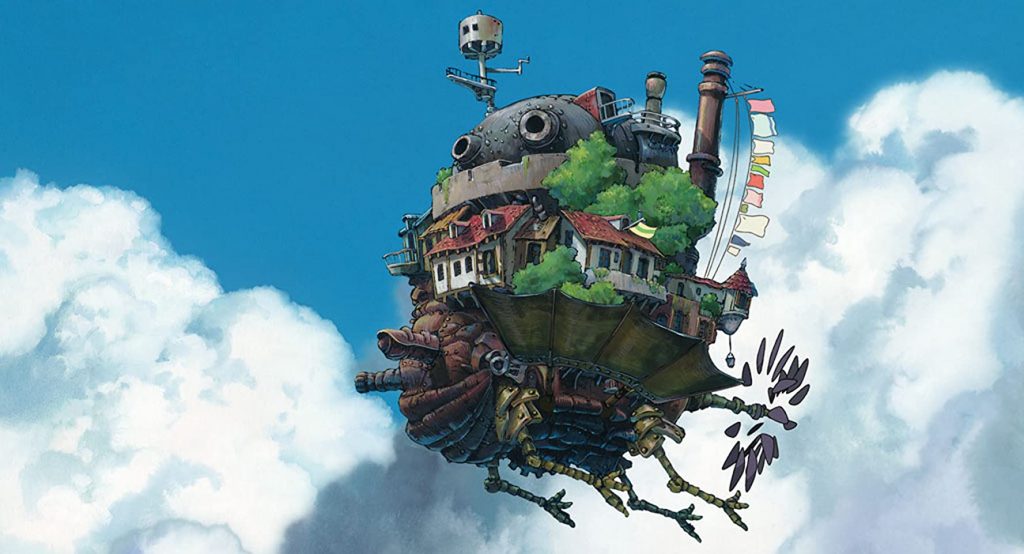Introduction
Howl’s Moving Castle by Hayao Miyazaki is on the list of cases where a movie adaptation adds to the original charm of the book. This is the reason, apparently, why the animation of 2004 became one of the most successful Japanese movies ever. Although it is quite “loosely based” on the cognominal fairy-tale novel by Diana Wynne Jones, the author appreciated it, in particular due to the exemplary visual performance (Campisi, 2020, para. 1-2). The story where magic is combinable with technology was bound to inspire such a big dreamer as Miyazaki; the morally strong female protagonist, which type is frequent in his works, may have become another attraction.

The above picture that shows the Castle is a textbook example of Miyazaki’s unique manner, natural and unconstrained but in parallel quite detail-oriented. It actually resembles the style of coloring books, which wakes nostalgic sentiments in the audience and consequently makes the animation appealing even before they watch it. In parallel, the moviemakers apply both elements and principles of art to demonstrate that the fairytale is closer to reality than it may seem to be at first sight.
Elements of Art
An essential component of any visual artwork is colors that can serve both to express the mood of the characters and to create it in the viewers. As apparent from the given shots, Howl’s Moving Castle is not excessively bright, which not solely hints that it is not for kids, but also adds to realism. The latter is important because, although the animation tells a fictional story, the emphasis is on the character’s traits and behavior, through which both Jones and Miyazaki seek to transmit certain philosophic messages.
Lines and shapes also determine the harmony of visual art by matching or not matching the colors. In Moving Castle, the lines are thin, and the shapes gentle, so that they supplement the delicate shades. The resulting combination enables drawing detail, such as the mimics of the characters and the decoration of their clothes, as in the image below. This not only strengthens the attachment to reality by specifying the setting epoch, but appeals to the viewer’s empathy by depicting emotions.

Principles of Art
As mentioned above, lines, shapes, and colors in the animation form a unity, which, in turn, comprises the detail that the moviemakers consider important. It is worth noting that, although the setting plays a considerable role in realistic perception, the emphasis is on people, specifically, on their emotional as well as behavioral response to the events. This is apparent from the scenes where the figures of the characters are especially sharp on the background of partly blurred landscapes, as in the following example. Such an approach to drawing proves that the main function of the animation is exploring the inner thought of various individuals and the ways in which they interact with each other and with the environment.

Conclusion
Howl’s Moving Castle, Hayao Miyazaki’s adaptation of the novel by Diana Jones, highlights the actual closeness of the fictional story to reality by artistic means. Among those are such elements as lines, shapes, and colors, whose subtleness provides sufficient flexibility for depicting important detail to make the characters lifelike. In addition, the sharpness of the latter in comparison with the backgrounds attracts additional attention to their feelings and actions, making the audience empathize with them.
Reference
Campisi, A. (2020). Howl’s Moving Castle: A dazzling animated adventure for grown-ups (review). Loud and Clear. Web.